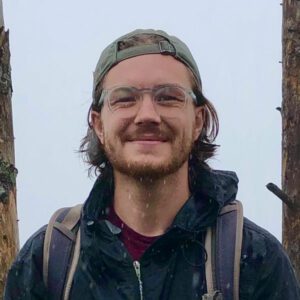“Not Just Us”: A Charlotte Community’s Fight for Wildlife and Habitat

In both the backcountry and developed urban centers, land has limits. Each parcel of land possesses its own carrying capacity, especially in areas predominantly designated for human use, such as neighborhoods and urban centers. Sometimes, finding a balance that allows both people and wildlife to coexist and flourish can be challenging, particularly in spaces shared by a community of individuals.
In these spaces, making a positive impact on wildlife and habitat can seem like an insurmountable task. However, all it takes is the determination of a few individuals to mobilize an entire community into action. This is precisely what is happening in the Avignon community in Charlotte, NC.

Invasive species removal at Avignon
Avignon is a neighborhood located just outside central Charlotte and contains some small plots of plant life critical for the urban wildlife in the city. Susan Hooper, a resident of Avignon and a certified Master Gardener, identified an issue with some of these spaces, particularly a crowded lot adjacent to some of the community’s residences.
“I’m not very knowledgeable about native tree identification,” said Hooper, “but I know enough about plants and gardening to recognize that some plants in that lot needed to be removed.”
Years ago, the lot had been cleared, exposing the soil to invasive plant species like privet, English ivy, and Bradford pears. Over time, these invasive plants overtook the plot, displacing native plant species and preventing new growth. Additionally, some native trees, overwhelmed by the invasive species, started falling into the community, causing damage to houses and property.
Susan and other community residents consulted with a city arborist who advised them to do everything possible to support the lot’s restoration. But even with this understanding, they were at a loss of where to begin.
Fortunately, Hooper had connections with native plant enthusiasts in the state and had heard of the North Carolina Wildlife Federation’s habitat restoration projects. In collaboration with Avignon’s Homeowners Association (HOA), she reached out to NCWF for assistance.
After assessing the lot, NCWF helped facilitate a preliminary habitat restoration project with the initial objective of removing as many invasive species as possible.
“We’ve been battling this invasive plant issue in the community for three years,” said Avignon HOA President and resident Kris Horacek, “but it was such a relief to partner with NCWF and get started on really addressing the issue.”
The first invasive species removal day in the community was attended by the Avignon landscaping crew, a few community volunteers, and NCWF staff. While the crew made progress in clearing the overgrown lot, it was evident that more work was needed – which led to the second community workday.

Pawpaw (Asimina triloba)
“We weren’t sure what kind of response we’d get when we asked for volunteers,” said Horacek, “but recently, people have been joining just because they thought the project sounded like fun to participate in. I believe that’s another important aspect – it’s something for the neighborhood. It’s not just about celebrating together; it’s a real neighborhood changing situation.”
Many of the natural spaces within the community abut the property lines of neighboring communities, which Horacek sees as an opportunity for joint-community projects. As a member of the Southpark Area Neighbor’s Board, she plans to offer support and share valuable information with communities facing similar habitat challenges.
Both Hooper and Horacek believe that the solution to addressing these large-scale issues lies in education. Hooper joyfully recalled digging through the invasive plants within the community lot and discovering a native pawpaw tree that no one knew existed.
 “People often don’t know what questions to ask.” Said Hooper, “Leading them toward asking those questions, helping them through it, igniting their enthusiasm, and making them understand why this is important – those steps are crucial in this. People need to learn how to identify and notice these things.”
“People often don’t know what questions to ask.” Said Hooper, “Leading them toward asking those questions, helping them through it, igniting their enthusiasm, and making them understand why this is important – those steps are crucial in this. People need to learn how to identify and notice these things.”
Hooper and Horacek are considering including educational snippets in their community newsletter about native plants and habitat restoration tips. They stress that planting native species isn’t just about beautification but also an opportunity to provide shelter and food for native wildlife.
In addition to making space for native plants, Hooper and Horacek anticipate this project will create an environment where the entire community can thrive, benefiting both wildlife and people. By planting species that support wildlife, they are excited about the idea of promoting birdwatching and pollinator identification within the community.
Beyond that, they hope to encourage other neighborhoods to create a space for both wildlife and community to thrive.
“I think it’s given our community a sense of working together for the good of the whole community. Not just us, but the whole community, and those around us.” Said Hooper, “It’s not just about beautification; it’s about environmental sustainability and what we should be doing. Rather than a metropolis, we want a place where wildlife can live and flourish.”
Written by:

– Written by Bates Whitaker, NCWF Communications & Marketing Manager

– Ben Burrows, NCWF Philanthropy Associate


